The pieces in “Animali Tarallo” portray animals from stingrays to elephants through portraits and interpretations of their patterns.
Squirrel Spotting: Body Language Speaks Volumes
A great deal of time is spent coaching the correct language for sales. But even more important, Peter Smith says, is what your body language is saying.

A great deal of time and energy is spent by managers and trainers coaching the correct language to use in sales environments. We understand the power of words, and we must frequently battle the need to say just the right thing without it coming across as staged or contrived.
Some of the efforts are trite, outdated and wholly ineffective. “How can I help you?” ought to be unceremoniously retired because it all too often serves to invite the equally useless and generally automatic, “I’m just looking.”
Other greetings, such as DSW’s laughable, “May I help the next shoe-lover?” are borderline ridiculous, coming, no doubt, from a well-intentioned, but misguided, corporate head who likely never worked a day of his or her life behind a retail counter.
What we hear less of is the impact that good (or bad) body language can have on our customer interactions.
Connie Dieken wrote in “Talk Less, Say More” that, “Vision is the most dominant human sense. Your brain processes visuals up to 10 times faster than mere words, according to research in both educational theory and cognitive psychology.”
If Dieken is correct and we do, in fact, process visuals 10 times faster than words, it would seem to suggest that how we approach/engage customers and how we carry ourselves, physically, matters a good deal more than the words we use. And, as it happens, those non-verbal communications happen immediately and carry through the entirety of the customer interaction.
So, what are the most important elements of body language of which we ought to be aware?
In the first instance, we should know that “emotional contagion” is a term that psychologists like to use. What it really means is that whatever emotional state you bring in to an interaction will be contagious. If you approach your customers with good energy and a positive attitude, you will likely receive that positive energy in return.
On the other hand, a negative attitude and demeanor is likely to receive the same in response from your customer; a certain recipe for emotional disconnect. So, start with a positive attitude and good energy.
Alexander Todorov, Princeton University, wrote an important white paper that indicated that we make a decision about whether we like someone or not in one-tenth of a second. That kind of immediate non-verbal communication demands that our body language--typically observed before any words are ever spoken--is extremely important.
Smile
There is no better way to communicate non-verbally than to wear a smile on your face. Gretchen Rubin wrote in “The Happiness Project” that: “Studies show that you tend to like people whom you think like you; and the amount of time you smile during a conversation has a direct effect on how friendly you’re perceived to be.”
Touch
Leonard Mlodinow wrote in “Subliminal, How Your Unconscious Mind Rules Your Behavior” that: “Scientists have discovered a particular kind of nerve fiber in the people’s skin--especially in the face and arms--that appears to have developed specifically to transmit the pleasantness of social touch.”
The easiest way to physically connect with someone when you meet them is to extend your hand and introduce yourself. Sincerely touching their elbow or arm, as the conversation progresses, is another way to create a meaningful physical connection.
Look Into Their Eyes
Sanjida O’Connell wrote in “Mindreading, An Investigation into How We Learn to Love and Lie” that: “When someone stares directly into your eyes, your heart rate increases, as does the electrical activity in your brain.”
So, go ahead, make purposeful eye contact and use that electricity to light a spark.
Use Hand Gestures
Joe Navarro wrote in “What Every Body Is Saying” that: “Effective communicators use their hands as part of their speech.”
Pull up a few TED Talks and watch the top speakers communicate. They seem almost unable to speak without using their hands, and their communication is all the more effective for it.
Mirror the Customer’s Tone of Voice
Rosabeth Moss Kanter wrote in “Confidence” that: “The synchronizing of a sad or happy tone of voice, for example, is often unconscious, as though the human brain is hard-wired to get in tune with other people, because it is more pleasant to have a sense of rapport. Being out of tune is jarring and makes people feel isolated.”
Be Expansive and Open
In “Presence,” Amy Cuddy wrote, “When our body language is confident and open, other people respond in kind, unconsciously reinforcing not only their perceptions of us but also our perception of others.”
Encountering people who are closed to us, slightly turned (disconnected) or with folded arms (guarded) makes it very difficult to establish a rapport.
Active Listening
In “The Rare Find,” George Anders wrote, “Aggressive listeners gain authority by being incredibly attentive to other people. These experts catch the gestures, pauses and inflections that hint at something beyond the words being said at the time.”
There is, of course, a difference between listening and active listening. Active listening is, absent the verbals, a participatory activity. It requires much more than simply being quiet while the other person speaks. The listener should lean-in, nod in affirmation, maintain eye contact and generally mirror the facial expressions of the person speaking.
Being aware of our non-verbal communication is crucial to establishing and maintaining an emotional connection with our customers and our co-workers.
It has often been said that when the words being spoken are at odds with the body language, always believe the body language. It’s that important.
Peter Smith is president of Vibhor, a public speaker and author of “Sell Something” and “Hiring Squirrels.” He spent 30 years building sales teams in retail and wholesale and he can be contacted at dublinsmith@yahoo.com, peter@vibhorgems.com, or on LinkedIn, Facebook or Twitter.
The Latest

Parent company Saks Global said the iconic location will be open through the holiday season as it decides what to do with the space.

Ronald Winston, son of Harry Winston, donated the diamonds to the Smithsonian National Museum of Natural History in Washington, D.C.
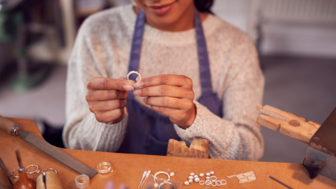
Bench jewelers spend years honing their skills, Jewelers of America’s Certification validates their talents.

The virtual event will take place April 7 at 3 p.m.


The educational event will take place in Charlotte, North Carolina, this May.

The layoffs come amid the TV shopping channel’s efforts to restructure and focus on live shopping through social media.
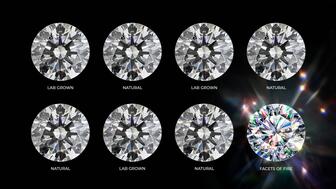
Natural diamonds mean more than lab-grown, but when every cut is ideal, they all look the same. Customers want more—Facets of Fire delivers.

The debut event will take place in Miami’s Coconut Grove neighborhood this fall.

The roundtable will take place May 17 ahead of the trade show’s welcome dinner.

The “Peanuts x Monica Rich Kosann” collection features the comic strip’s classic vocabulary across 10 bracelet designs.

Three industry experts dive into the complexities of the material often marketed as an “ethical” alternative for metal in jewelry.

Diamonds are not only one of the most prominent gemstones, but the birthstone for those born in April.

The Utah-based company known for making wedding bands has acquired Doubloon Golf.

The longtime luxury executive led one of LVMH’s watch brands, TAG Heuer, for 12 years before taking over Bulgari in 2013.
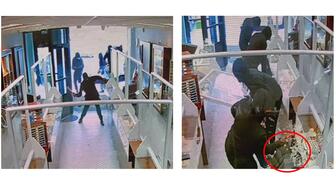
Authorities said the robbers fled with jewelry and 70 Rolex watches, later taking pictures of themselves posing with big stacks of cash.

Lotus Gemology founder Richard W. Hughes has translated Heinrich Fischer’s 1880 book “Nephrit und Jadeit” from its original German.

The ring's design features contrasting lines influenced by work from architecture-inspired photographer Nikola Olic.

The Conference Board’s index fell as consumers continued to worry about the impact of tariffs, the labor market, and the price of eggs.

However, two medieval jewels surpassed estimates at Noonans Mayfair’s recent jewelry auction in London.

The Oscar-nominated actor debuted in the campaign for the new “Top Time B31” collection, which introduced Breitling’s Caliber B31.

The Congress is scheduled to take place May 19-22 in Brasilia, Brazil.

The “150 Art Deco” collection features a Miss America timepiece and a pocket watch from the brand’s Archive Series.

Alex Wellen, formerly CEO and president of MotorTrend Group, has taken on the role.

The Impact Initiative is part of the nonprofit association’s new three-year strategic plan.
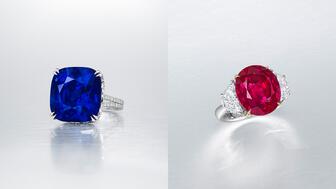
The ruby and the sapphire, which Christie’s calls a “once-in-a-generation masterpiece,” are part of the upcoming Hong Kong jewelry auction.
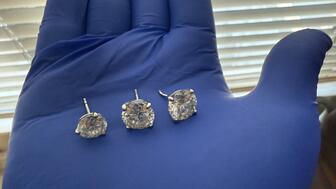
The two pairs of earrings, snatched from a Tiffany & Co. store in Orlando, Florida, are valued at a combined $769,500.





























